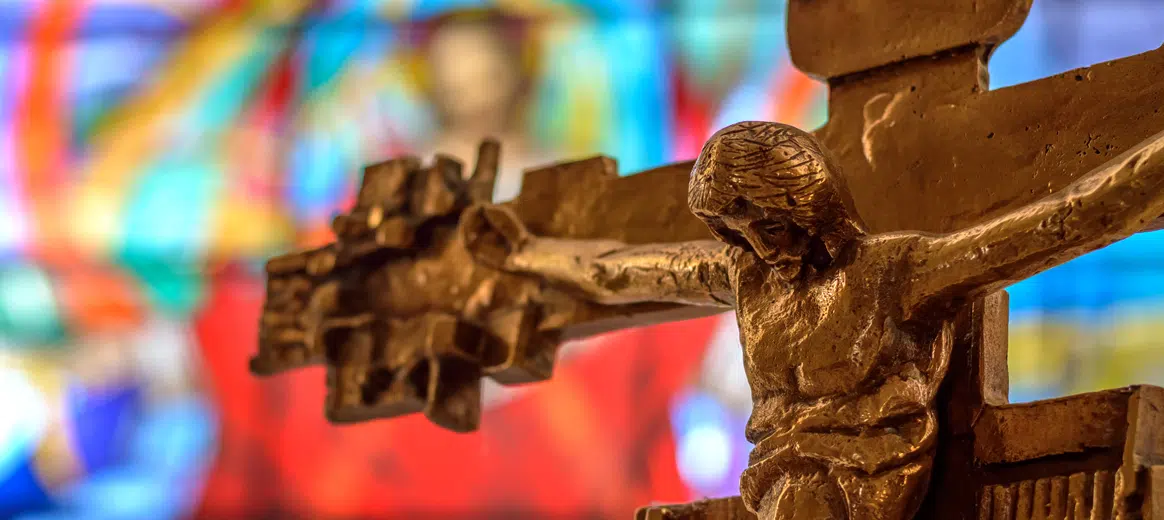St. Hallvard
Feast day: May 15
In the small army of Scandinavia’s saints, one of the most appealing is St. Hallvard. He was a seafarer who traded furs, walrus ivory and amber along the Baltic Sea ports. One day Hallvard was about to sail across Oslo’s Drammenfjor, when he heard a cry. Looking up he saw a pregnant woman stumbling down the dock toward his ship. As she climbed aboard, she begged Hallvard to help her. Three men had accused her falsely of theft and were out to kill her.
This desperate woman must have ranked at the bottom of Norse society. A free-born wife and mother accused of a crime would have seen her kinsmen rally around to protect her. The fact that the woman had to turn to Hallvard, a complete stranger, for help is a pretty clear indication that she was either a slave or the poorest of the poor. And her life truly was in danger – under Norwegian law at the time, the penalty for thievery was death.
Hallvard, on the other hand, was the son of a well-to-do Christian family of landowners and merchants. On his mother’s side he was a close relative of the king and martyr, St. Olaf. No one would have blamed him if he turned his back on this friendless woman. Yet instead of abandoning her, Hallvard believed her, helped her into his boat, and began to row toward the opposite shore of the fjord where she could escape. Hallvard had not gotten far, however, when the woman’s pursuers ran out onto the pier, leapt into an empty boat, and came after them.
“Give us that miserable woman!” they cried.
“What wrong has she done?” Hallvard shouted back at them.
The men claimed that the woman had torn off the door bolt of their brother’s house and stolen valuables from it. Such a charge convinced Hallvard the woman was innocent. “It would take a strong man to do that,” Hallvard answered. Then he added that to satisfy the men he would pay them the value of whatever was missing from the house. But Hallvard’s offer was not good enough; the pursuers wanted him to hand over the woman. Hallvard refused. Then one of the men took his bow and fired arrow after arrow. One arrow pierced Hallvard’s throat, killing him. In that rain of arrows the woman Hallvard had tried to protect was killed, too.
To cover up their crime, the three men buried the woman on the shore, but Hallvard’s body they weighted with a millstone and dumped into the sea. In spite of the great stone tied to it, Hallvard’s body floated. The Christians of Oslo hailed it as a miracle; Hallvard’s body was enshrined in Christ Church in Oslo, and Hallvard was proclaimed a saint.
The Reformation destroyed St. Hallvard’s shrine, but not his memory. In Norway St. Hallvard is still honored as Oslo’s patron saint, while the Catholic world, in recognition of his attempt to save a helpless stranger, venerates him as the patron of the innocent.
Craughwell is the author of Saints Behaving Badly and This Saint Will Change Your Life.



